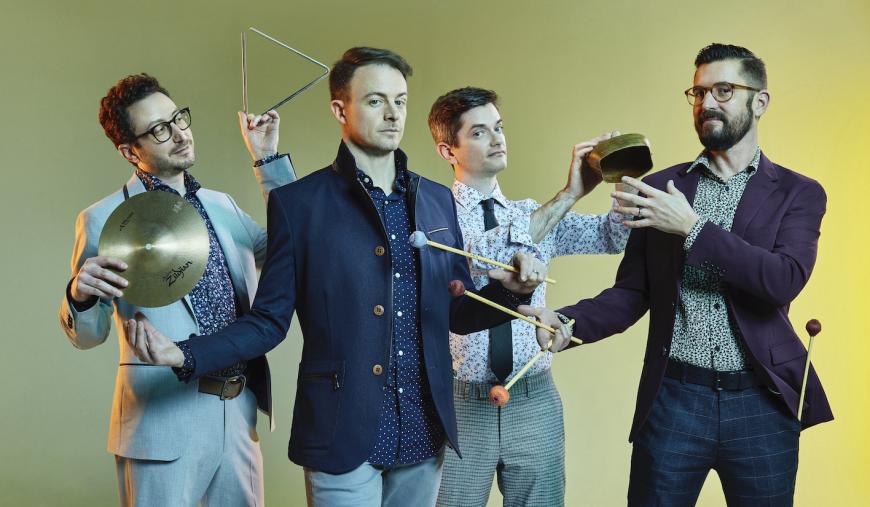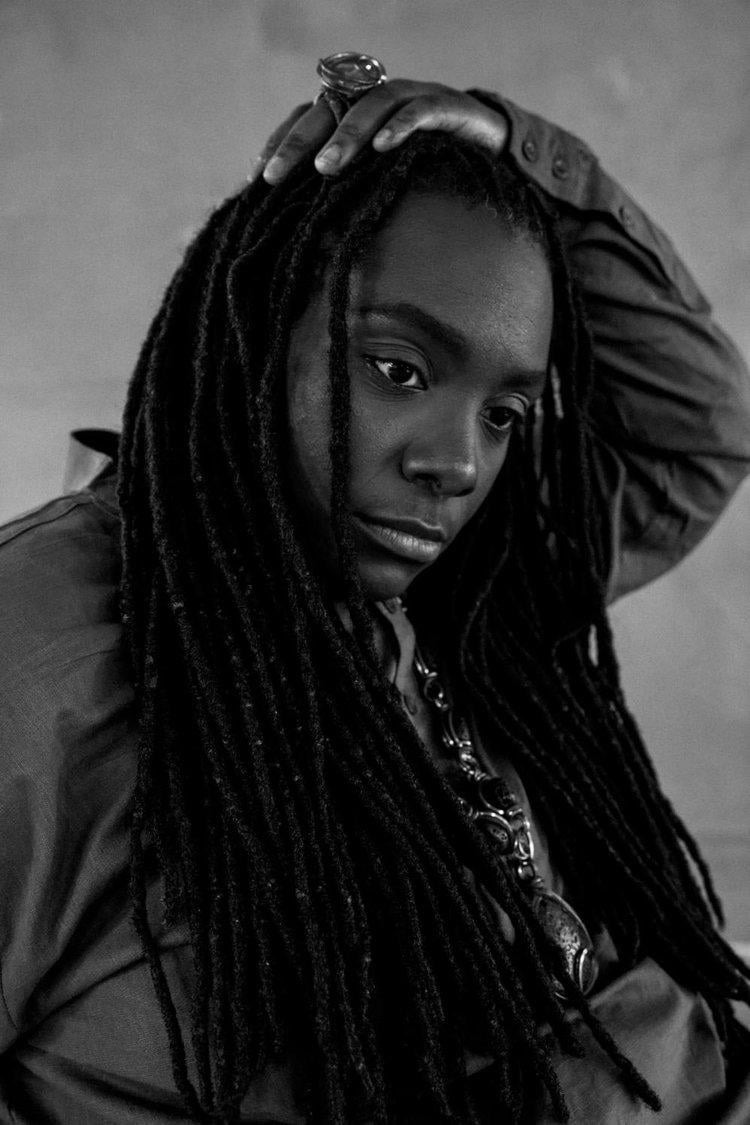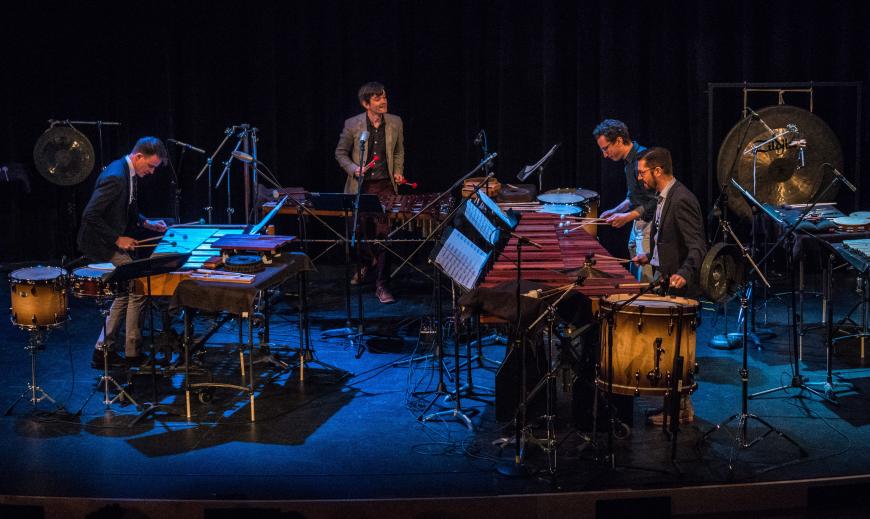
Within classical music, many like to pretend that a performer’s role — whether presenting a classic work, commission, or arrangement — is to access something static and predetermined about the composer’s intent.
The reality: Through the act of performance, musicians give unique embodiment to a score, imbuing it with singular and experientially specific emotional resonance. In this way, performers are collaborative producers in every work, be it a staple of the canon or a world premiere.

Few ensembles lay out this case in clearer terms than Third Coast Percussion did in its Friday night program at the Nimoy Theater for UCLA’s Center for the Art of Performance. The ensemble’s interpretive powers expanded the emotional architecture of commissions from Gemma Peacocke and Danny Elfman. And across arrangements of music by Philip Glass and Clarice Assad and a collaborative realization of composer Jlin’s electronic scores, Third Coast’s distinctive footprint came into even clearer focus.
Peacocke’s Death Wish, scored for four players on two marimbas, was written, says the composer, “after watching a short film featuring New Zealand survivors of sexual assault. … In the piece I thought about the spooling and unspooling of energy and how we are all bound and driven by forces both within and beyond ourselves.”
The ensemble worked skillfully to make these ideas of spooling and unspooling manifest through interpretation. The players’ pillowed touch in the slow opening melodies highlighted the way Peacocke’s confident writing embraces percussion’s relationship to resonance and decay. As the piece introduced more outward moments of intensity, the ensemble found new layers of emotion. Frenetic pinging figures in the upper registers were satisfyingly breathless. Meanwhile, a strong group blend in pulsing bass gestures allowed a synth-like throbbing to emerge, as if spontaneously.
Elfman’s Percussion Quartet allowed the group further opportunity to showcase its athletic abilities, aided by the introduction of live-from-the-stage footage, which spotlighted vigorous moments of chamber playing. The ensemble brought an appropriately cinematic showmanship to the work’s prickly, quick-change sensibility, dynamism, and dramatic sense of scale.
This quality came through most strongly in the piece’s third movement, a quasi-scherzo. Sean Connors’s virtuosic kit-spanning solo — a rhythmic double to fast-moving marimba figures — was a perfect encapsulation of the piece’s penchant for both spectacle and wryness.
Third Coast continued to find fitting colors in its arrangements and reimaginings. Assad’s The Hero was propelled by running modal lines that were translated gracefully across the ensemble’s keyboard percussion instruments. Robert Dillon’s crisp groove on cajón was instrumental in maintaining the angularity of this piece originally for piano and guitar.

The ensemble’s arrangement of Glass’s Metamorphosis No. 1 found emotional moments in its textural diversity, too. Near-niente glockenspiel melodies, focused but fragile, unfolded over gristly tolls from bowed xylophones. A melodica, which garnered a few chuckles when first introduced, soon took on a surprisingly touching solemnity as it developed those melodies.
Glass, in a video message, expressed great enthusiasm for the ensemble’s adaptation. But the expansion of the piece’s palette did alter the longitudinal arc of the original work. Though rendered with commitment, it was perhaps the least evocative piece on Friday’s program.
By contrast, the group’s collaboration with Jlin, the Pulitzer Prize-nominated Perspective, finds Third Coast at the peak of its arranging powers. By working with Jlin to translate her electronic recordings into a performance score suited for analog instruments, the group has integrated its performance idiom seamlessly into the structure of the work.
Perspective’s musical materials range widely, from boom-bap interludes in “Derivative,” reminiscent of vintage Clipse, to the halting irregularity of “Paradigm” and the polyrhythmic buzzing of “Embryo.” At every turn, the performers infused the materials with their own sensibility, approaching the extreme timbral variation with seemingly endless invention.
The extent to which a rubber mallet, slid just so over the face of a bass drum, mimicked a classic 808 drum machine was nothing short of astonishing. So, too, was the variety of synth-like shades wrung from the xylophone through a bevy of extended techniques. Even with the benefit of accompanying live footage, it was impossible to ascertain every method by which the group produced all of the startling sonorities on display.
In a video message which followed the first movement, Jlin opined, “If I write for a band or an orchestra, I don’t want [my piece] played back to me exactly like I wrote it. I want, you know, a different perspective.” No matter the repertoire, Third Coast’s perspective is always worth a listen.




